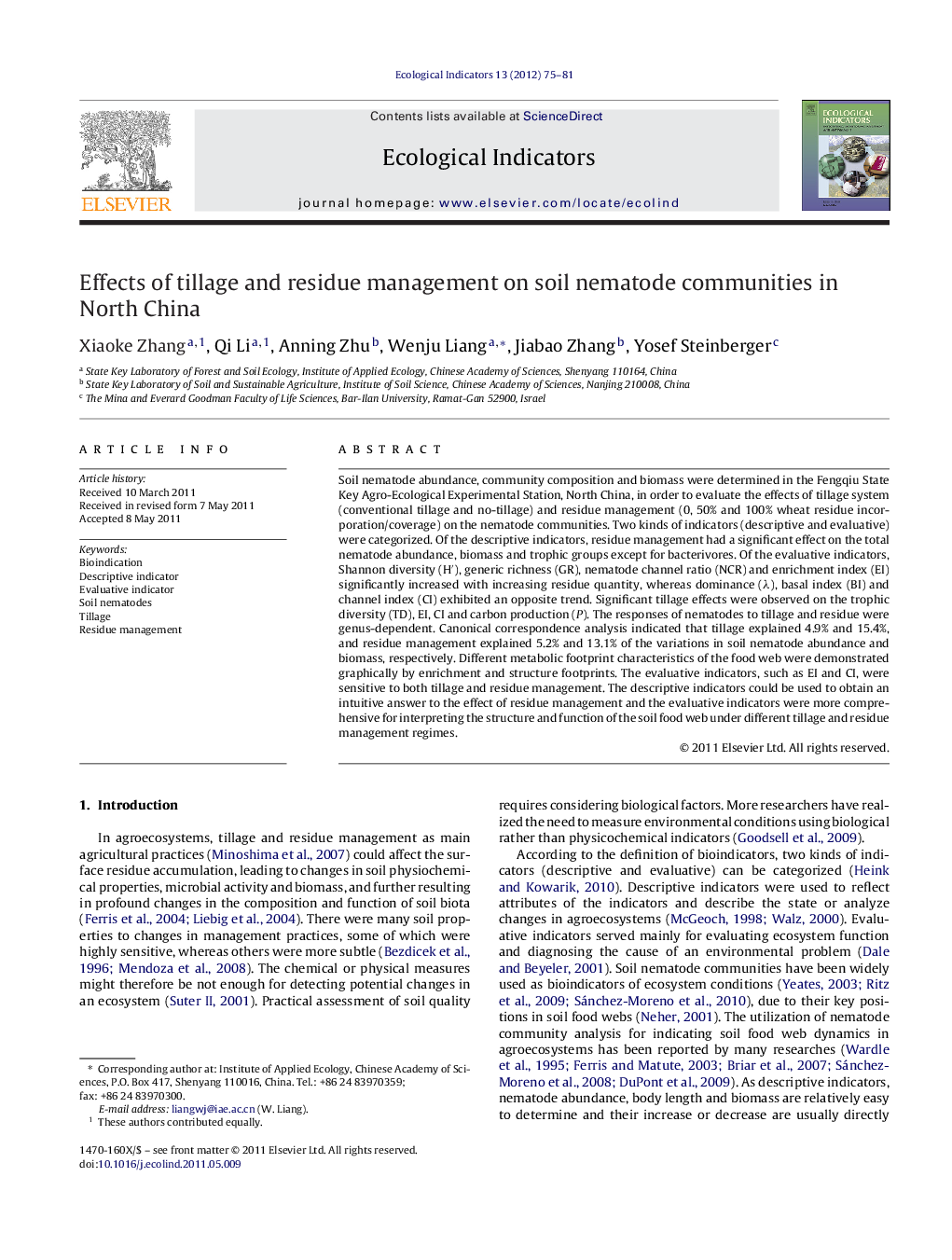| کد مقاله | کد نشریه | سال انتشار | مقاله انگلیسی | نسخه تمام متن |
|---|---|---|---|---|
| 4374001 | 1303160 | 2012 | 7 صفحه PDF | دانلود رایگان |

Soil nematode abundance, community composition and biomass were determined in the Fengqiu State Key Agro-Ecological Experimental Station, North China, in order to evaluate the effects of tillage system (conventional tillage and no-tillage) and residue management (0, 50% and 100% wheat residue incorporation/coverage) on the nematode communities. Two kinds of indicators (descriptive and evaluative) were categorized. Of the descriptive indicators, residue management had a significant effect on the total nematode abundance, biomass and trophic groups except for bacterivores. Of the evaluative indicators, Shannon diversity (H′), generic richness (GR), nematode channel ratio (NCR) and enrichment index (EI) significantly increased with increasing residue quantity, whereas dominance (λ), basal index (BI) and channel index (CI) exhibited an opposite trend. Significant tillage effects were observed on the trophic diversity (TD), EI, CI and carbon production (P). The responses of nematodes to tillage and residue were genus-dependent. Canonical correspondence analysis indicated that tillage explained 4.9% and 15.4%, and residue management explained 5.2% and 13.1% of the variations in soil nematode abundance and biomass, respectively. Different metabolic footprint characteristics of the food web were demonstrated graphically by enrichment and structure footprints. The evaluative indicators, such as EI and CI, were sensitive to both tillage and residue management. The descriptive indicators could be used to obtain an intuitive answer to the effect of residue management and the evaluative indicators were more comprehensive for interpreting the structure and function of the soil food web under different tillage and residue management regimes.
► The descriptive and evaluative indicators were applied to assess soil nematode responses to tillage and residue management.
► Of the descriptive indicators, the abundance and biomass of total nematodes, and the abundance of plant parasites and omnivores-predators were sensitive to residue management.
► Of the evaluative indicators, enrichment index and channel index were significantly affected by both tillage and residue management.
► The responses of soil nematodes to tillage and residue management were genus-dependent.
Journal: Ecological Indicators - Volume 13, Issue 1, February 2012, Pages 75–81